- Very accurate after calibration
- 11-point grayscale controls
- Triple laser RBG light source and no lamp replacements
- 100% DCI-P3 color gamut and approximately 90%+ BT.2020
- Good contrast
- Very quiet
- Good sound quality
- 3D support
- Built-in Wi-Fi 6/Bluetooth
- Unique swiveling and tilting gimbal stand
- Requires calibration for true color accuracy
- 11-point grayscale controls are global, limiting usefulness
- No auto color space recognition
- Falls well short of previously claimed 4,000 ANSI lumen spec
- Some visible laser speckle and rainbow artifacts
- No Netflix app
It's not without its quirks, but the JMGO N1 Ultra is a unique and sophisticated 4K, RGB laser projector that offers good performance, though it needs calibration to achieve real color accuracy.
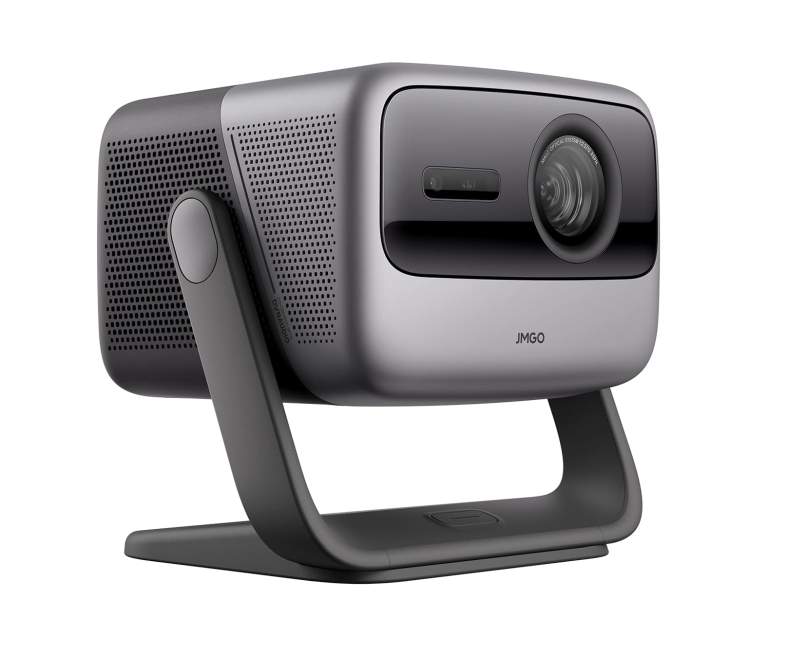
The JMGO N1 Ultra is the latest addition to JMGO's projector line, boasting an impressive list of specifications. With its gimbal-style stand, triple color RGB laser light engine, 2,200 CVIA lumen spec (formerly a claimed 4,000 ANSI lumens), 1,600:1 contrast ratio, BT.2020 coverage, 4K HDR support, Android TV 11, and co-created Dynaudio sound system, it has captured attention and the rapid funding of an extended Kickstarter campaign. Now, let's delve into its performance and see if it lives up to those specifications.
Features
The JMGO N1 Ultra utilizes Texas Instruments' popular 0.47-inch 4K DMD DLP chipset, which starts with a native 1080p micromirror chip and then enhances the image with ultra-fast four-phase pixel shifting. It employs JMGO's self-developed MALC (Microstructure Adaptive Laser Control) Triple Color Laser Optics engine to deliver a bright and vivid image. JMGO's patented MALC technology focuses on providing higher levels of brightness, color, and overall efficiency.
In collaboration with Nichia, a Japanese engineering company specializing in manufacturing and distributing phosphors, light-emitting diodes, and laser diodes, JMGO co-created the NUMB12T laser. The NUMB12T laser integrates multiple RGB lasers into one source, achieving modulation of laser output by varying the current to the laser. This co-developed 9-chip laser design offers advantages such as 10-15% higher efficiency, 40% reduction in size, 10% better heat dissipation, and approximately 30% lower cost compared to the more commonly used 14-chip and 28-chip lasers. The NUMB12T laser provides a light source life of 30,000 hours.
The light engine also incorporates the Quad Layered Diffuser System, which converts the laser spot into a uniform 16:9 image. This diffuser employs 400 miniature partitions on each layer, with each partition acting as a diffuser. The purpose of increasing the number of partitions to over 400, compared to the more common figure of just over 100 partitions, is to enhance brightness uniformity. JMGO claims to achieve over 95% brightness uniformity with this method, a figure we were able to verify.
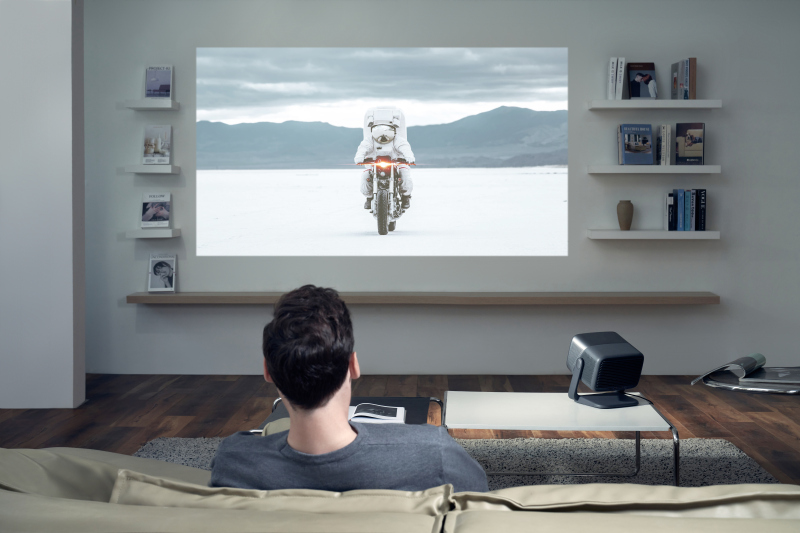
The last part of the light engine is what JMGO calls the Dynamic Light Speckle Reducer (LSR), which serves the purpose of changing the amplitude and frequency of the laser as it passes through to reduce laser speckle from the focused laser light. Laser speckle can be a somewhat common occurrence with multi-laser light engines, and according to JMGO's claim, their LSR technology reduces laser speckle by 96%. While this may very well be successful at reducing speckle, it does not eliminate it completely as I unfortunately did experience some degree of laser speckle during my time reviewing the N1 Ultra. It was most prominent when the projector backlight was set to anything over 8. The speckle was visible at lower backlight levels as well but most noticeable at higher levels, particularly in red, yellow, or green content. Additionally, as the N1 is a DLP projector, it is also susceptible to rainbows, which is a trait commonly seen in single-chip DLP projectors. I also experienced rainbows in some content during my time with the projector.
The culmination of JMGO's MALC optic engine produces the following claimed results: 2,200 rated CVIA lumens, 1,600:1 contrast ratio when measured FOFO (Full On Full Off) with no dynamic features enabled, 110% BT.2020 gamut coverage, and less than 1dE error for color accuracy. Note that for the duration of the N1 Ultra's extended crowdfunding campaign the projector's Kickstarter web page cited its brightness at 4,000 ANSI lumens, a figure that undoubtedly help drive early presales and was still there as of the publication of this review. This spec also appeared initially on JMGO's website. We tried repeatedly to verify this claim, even requesting specific settings from JMGO that would help to achieve this, but were able to measure a max of just 2,670 ANSI lumens in Vivid mode with maximum contrast and backlight set to 10, using a cool color temperature and bright gamma. The lowest measured value was 2,591 ANSI lumens. That ANSI specification has since been replaced on JMGO's main website with the 2,200 lumen CVIA spec based on a new standard from the China Video Industry Association. We did not verify it, but CVIA measurements are made using a 9-point averaged reading across the screen similar to ANSI or ISO21118 lumen, but with some stringent requirements on the color temperature and possibly other parameters.
On the other hand, the N1 Ultra did meet the specified contrast ratio of 1,600:1 for FOFO measurement, achieving 1,661:1, which remained consistent across all picture modes and increased as the backlight level was lowered, ultimately reaching a maximum of 3,623:1 FOFO.
The gamut coverage was impressive but did not meet the claimed 110% BT.2020. As we measured, the BT.2020 gamut coverage came in at 93.99% using the 1931 xy measurement and 96.46% with the 1976 uv measurement. The color accuracy of less than 1dE for an industry-standard D65/Rec.709 image was also not achieved. For detailed information regarding the out-of-the-box and post-calibration color accuracy, please refer to the Performance section of the review.
Similar to some other projectors in JMGO's lineup, the N1 Ultra features an audio system co-created with Dynaudio which offers two 10-watt speakers and certification for Dolby Audio and DTS decoding. JMGO claims the sound system is capable of 45Hz low-frequency bass, although it fell short of reaching that level of output in my tests. When measuring frequency sweeps with REW Room EQ Wizard software and a UMIK-1 microphone, the N1 exhibited an extremely steep roll-off below 54.4Hz. However, it can still produce 75dB of sound pressure level at 45Hz, which is likely where the specification comes from. Each of the N1's sound modes has a slightly different frequency response but shares a few common characteristics. There appears to be a 12dB null in the 430Hz range, and from around the 350Hz range, there is a significant boost in the lower frequencies of approximately 12 to 16dB to add fullness to the sound. The higher frequencies roll off at around 13kHz. Overall, the sound produced is sufficient for movies and TV, particularly for temporary setups this projector will likely find itself in. However, it is not a replacement for a dedicated sound system such as a soundbar, AVR, or Pre/Pro-amp combo.
The N1 Ultra features a very unique 2-axis gimbal design, allowing for up to 135 degrees of vertical and 360 degrees of horizontal movement, providing an impressive amount of flexibility and versatility in setup. This is further accompanied by on-board software for automatic geometric correction, which uses JMGO's proprietary algorithm to perform keystone and focus correction based on the N1's position using a 6-axis system. This feature works very well and quickly. Essentially, it provides Auto Keystone, Auto Focus, and Auto Flip. Both Auto Keystone and Auto Focus have manual setup options as well for fine-tuning, although I found the auto modes to be very accurate in their adjustments. This allows for easy plug-and-play installation and accommodates moving the projector around to wherever it's needed for a night of movie watching.
The Auto Keystone implemented in the N1 Ultra is also used for its Auto Screen Alignment. If the projected image extends beyond the edges of the screen, it will fit it into the frame of the screen edges. The Object Avoidance system is also based on the Auto Keystone functionality. It will shift and keystone the image as needed if an object, such as a wall power outlet or hung picture, is detected in front of the projected image. To accomplish this the projector has CMOS Hi-Res cameras on the front of the unit, near the sensors used for adaptive brightness control to adjust brightness based on ambient light. It's important to note that if the area is too large or the angle is such that correction for Object Avoidance is not possible, this feature will not work. However, when it is operational, it adjusts fairly quickly.
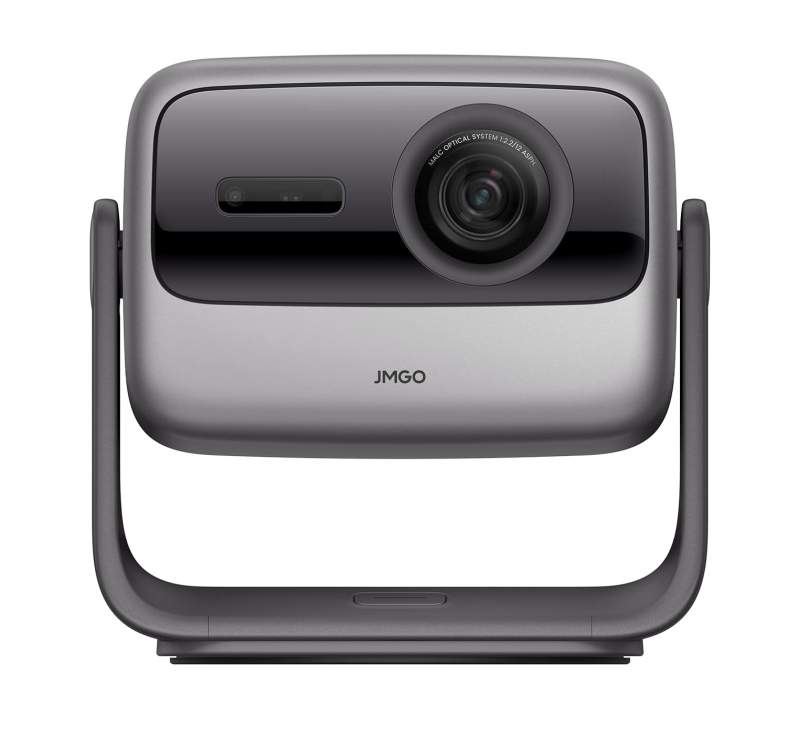
With a weight of 9.92 lbs. and dimensions of 9.48 x 7.99 x 9.29 inches (WHD), the compact N1 Ultra can be positioned in multiple locations. It allows for front and rear projection in tabletop and stand positions, as well as ceiling-mounting. With a 1.2:1 throw ratio, the N1 is capable of projecting a 100-inch diagonal screen from approximately 8 feet, 7 inches away, which is what I measured for my installation of the N1 during the review, without using the non-functioning digital zoom. The N1 appears to have 100% offset for the projected image, so potential buyers should take this into account, even though digital keystone is available. It's important to note that utilizing any form of digital keystone or warping can impact image integrity, so it is advised to take the extra time needed to install the projector in a way that avoids the use of keystone for any fixed installation. However, in temporary installations, it can be a viable solution. To determine the installation location and throw distance for your preferred screen size, please refer to the ProjectorCentral JMGO N1 Ultra Projection Calculator.
The N1 Ultra has Android TV 11 built into the unit itself, eliminating the need for an external dongle often found with projectors in this price range. It offers Google Assistant, a customizable home screen, access to the Google Play Store, and Chromecast. The interface is very snappy and smooth, and fortunately, it properly handles dynamic range, which has been a problem with various Android TV implementations, whether built-in or via a dongle, where all content is always delivered in HDR or BT.2020 regardless of its native dynamic range. Luckily, the JMGO N1 Ultra does not have these issues, and everything displays correctly. On the other hand, like a lot of Android projectors it does not have an authorized Netflix app, although most other apps such as MAX, Prime Video, Paramount+, etc. are available via the Google Play Store. One important note is that the backlight control is static and cannot be set to a unique value per picture mode, nor can it be saved to a picture memory and recalled to change the backlight level for SDR and HDR. Aside from that, it is a well-integrated implementation of Android TV 11.
The N1 Ultra is listed to have a latency of 15ms. However, when tested using Game picture mode with all auto keystone and geometry correction turned off, we measured input lag only as low as 35.1 ms with 2160p/60 signals, or 41.7 ms with 1080p/60. In Office mode the readings were around 58 ms. All other modes were up over 100 ms.

Our initial early sample of the N1 Ultra, manufactured during the Kickstarter campaign, did not support 3D despite this being a claimed feature. A second more current sample, supplied to us with JMGO's own branded DLP-Link glasses, worked very well but revealed some design flaws that made 3D viewing inconvenient at best. The projector defaults to its Top-and-Bottom 3D mode when it sees a 3D signal, which requires a trip to the 3D menu to turn it from Off to the desired Frame Packing mode. From there, every time you load a new 3D movie you must do an extra click on the button on the glasses to swap the orientation of the left and right eye to put them in proper alignment and make the image look correct. At that point, any break in the HDMI signal, even just going to the Android Home page and then reselecting the HDMI input, results in everything resetting to the defaults and repeating this clumsy process. JMGO confirmed this was expected behavior and that they intend to make firmware updates to improve the 3D user experience. Fortunately, once it was all set up, 3D looked very good on the N1 Ultra, exhibiting a bright image with subjectively acceptable color and no crosstalk.
The connections on the N1 Ultra are very minimal, featuring two HDMI 2.1/HDCP 2.2 ports that are not full bandwidth and do not support DSC (Display Stream Compression) or FRL (Fixed Rate Link). However, they do support ALLM (Auto Low Latency Mode), and one of the ports supports eARC (Enhanced Audio Return Channel). There's a single USB 2.0 Type-A port with sufficient power delivery to power a Fire TV 4K, and a single DC port for powering the N1 Ultra unit itself. Additionally, the N1 supports Wi-Fi 6 and Bluetooth 5.0.
The remote included with the N1 Ultra is fairly simple, featuring the standard buttons for power, Google Assistant, navigation ring and OK button, back, home, volume, settings button for Android TV, and a shortcut settings button that provides quick access to input options, input settings, picture, sound, and power. It's important to note that the shortcut settings button only functions when viewing content via HDMI. If it is pressed while using Android TV 11, it has no function.
Finally, the JMGO N1 Ultra comes with an unusual extra: a hinged styrofoam packing crate that protects the projector in shipping and then doubles as a carry case for storage or transporting it around.
Performance
Color Modes. The JMGO N1 Ultra offers a total of 12 picture modes that use the same naming conventions between SDR and HDR but have separate memories for settings. As mentioned, we received two different samples of the N1 Ultra, one an early sample that probably reflects what Kickstarter supporters were shipped, and the current model as of mid-August that offered somewhat different picture mode and other image control options. Since some readers may have the earlier version, this section will cover picture modes for both. Both versions were ultimately calibrated and evaluated, though viewing comments are based on the more up-to-date sample.
The available modes for SDR in our first, early sample includes Vivid, Standard, Movie, Game, Office, and User, while the second, current sample includes Glaring, Vivid, Standard, Game, Office, and User. After measuring both projectors, the changes to the picture modes effectively appear to be just the naming conventions. Ultimately, Vivid changed to Glaring, Standard changed to Vivid, and Movie changed to Standard. These same picture modes exist for HDR as well and do not have any identifier in the menu to indicate which dynamic range they are for, such as something like "User (HDR)." All available picture modes have varying presets associated with them but can all be made identical if desired. From my testing, it does not appear that using one picture mode over another provides any added benefit or additional controls outside of a closer starting point for accuracy.
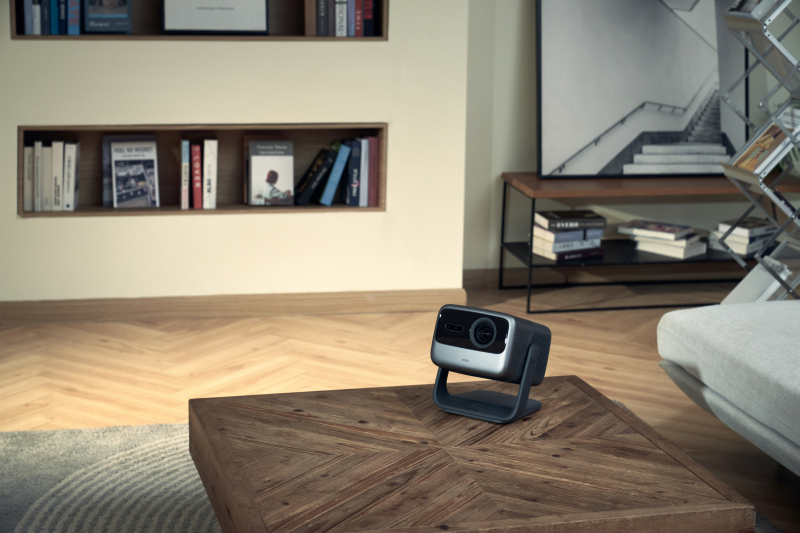
None of the picture modes of the N1 Ultra were accurate out of the box, as they were either too warm, too cool, or had gamma issues, One major change between the two samples is the earliest sample had a Color Space menu available in the Advanced menu within Picture Options, which was not available in the second sample. The first sample had the Color Space set to Auto. DNR (digital noise reduction) was also removed in the second, later sample after being available in the first. None of the picture modes have the correct mix of settings that I would consider ideal. However, with a few minor changes, they could get closer to accuracy, although calibration would still be beneficial, and this applied to HDR picture modes as well.
For SDR, the first sample's color tracking for Rec.709 was significantly off due to the Color Space setting and how it works with Auto and the N1's native gamut coverage. The N1 is capable of covering a large portion of the BT.2020 color space, which is its native gamut. JMGO stated in its specifications that it has 110% BT.2020 gamut coverage. However, as mentioned, our measurements showed that BT.2020 coverage came in at 93.99% in 1931 xy and 96.46% in 1976 uv. The second sample, which had the Color Space menu removed, effectively functions in the N1 Ultra's native gamut— equivalent to the Auto selecton on Sample One. Gamut coverage for the second sample measured 94.33% in xy 1931 xy and 95.35% in 1976 uv.
This coverage would be lower when also considering color luminance since projectors generally lack the light output to achieve a truly high color volume. Sample One gamut coverage for the P3 gamut measured 99.19% for 1931 xy and 99.58% for 1976 uv, while sample two measured 98.55% in 1931 xy and 99.35% in 1976 uv, so the projector does more or less reach the full DCI-P3 color range associated with most HDR content today.
When measuring Rec.709 with the Color Space setting set to Auto or Off, the measurements reported 148.4% coverage of the Rec.709 gamut, this was effectly the coverage for Sample Two as well. When setting Color Space to On in sample one, Rec.709 gamut coverage was reported 107.2%, producing a more accurate color space for the content. This behavior with color space conversion has been seen before with the Formovie UST, which ProjectorCentral reviewed in December 2022 and which uses a near identical OS. Coincidentally, all of the same quirks seen in the Formovie are also present in both tested samples of the N1 Ultra, such as the global 11-point white balance and the global Backlight control being applied to all picture modes. Therefore, all of the same findings regarding the CMS and color spaces in the Formovie UST apply to the N1 Ultra as well.
Luckily, turning Color Space to On with Sample One results in correct mapping of Rec.709. However, if Auto is selected and either Rec.709 or P3 content is sent to the projector while it is in its native BT.2020 color space, they will track fairly close but may have some saturation and hue issues, especially in red, blue, magenta, and yellow. It is technically possible to calibrate just BT.2020 or P3 and let the projector map the content within BT.2020 based on the content's mastering primaries, but for a higher level of accuracy, it is recommended to turn Color Space to On to allow proper mapping for Rec.709 if your unit has the Color Space menu option.
For Sample One, with the Color Space set to On to best accommodate Rec.709 content, there were very minor issues with hue and saturation; in HDR, hue was the biggest issue, specifically with secondary colors, followed by saturation in all colors, with green requiring the most adjustment. Sample Two exhibited issues with oversaturation for all colors as well as hue issues.
OOTB (out of the box), the most accurate mode for a starting point among the earlier units (Sample One) would be Movie, as it uses a Warm color temperature. For later/current units, Standard would be the most accurate, though this requires changing the color temperature to the Warm setting. However, any mode could be accurate by simply turning Color Space to On (if available in your early unit), Color Temperature to Warm, and Gamma to Dark for SDR. For HDR, turn Color Temperature to Warm and Gamma to Middle. This would get a user about 85% where they want to be. Since the N1 is unable to have different Backlight settings for different picture modes, I would recommend using the same picture mode for both SDR and HDR and setting Backlight to taste based on whichever content is consumed the most.
The calibration controls provided in the N1 Ultra are good but could be better. Ultimately, a Gain control is provided for Color Temperature, but no 2-point white balance controls or Brightness setting to adjust black level are available. Additionally, an 11-point white balance control is provided starting at 5% and increasing in 10% increments up to 100% brightness. The issue with these controls is that they are global, so if they are used, they apply to both SDR and HDR, and all picture modes. They were useful in SDR, but not as much in HDR, as they were too coarse and a single click would make too large of a change. Since they cannot be unique to a picture mode, it is advised against using them to prevent the need to turn them off when switching between SDR and HDR. On the other hand, the CMS (Color Management System) was unique to each picture mode and between SDR and HDR, and was very effective in dialing in primary and secondary color points. It's important to note that the global controls are not a JMGO issue; it is specific to this particular OS and something that I would like to see changed in the future.
For calibration, I used Calman Ultimate calibration software from Portrait Displays, a Colorimetry Research CR-250 Spectroradiometer, a Colorimetry Research CR-100 Colorimeter, and a Murideo 8K Seven Generator. The N1 Ultra was calibrated to a 100-inch diagonal image on a Stewart Filmscreen Studiotek 130 G4 screen. Prior to calibration, I ran various measurements to confirm my observations from the out-of-the-box viewing experience.The pre-calibration measurements for the N1 Ultra were okay but none of the out-of-box picture modes came anywhere near the less than 1dE error stated by JMGO. The pre-calibration measured dE values in both samples were fairly high in both SDR and HDR. (DeltaE (dE) is the metric used to determine visible errors, with a value above 3 being visible, above 2.3 being a just noticeable difference for trained eyes, and below 2.3 ideally not visible to the naked eye.)
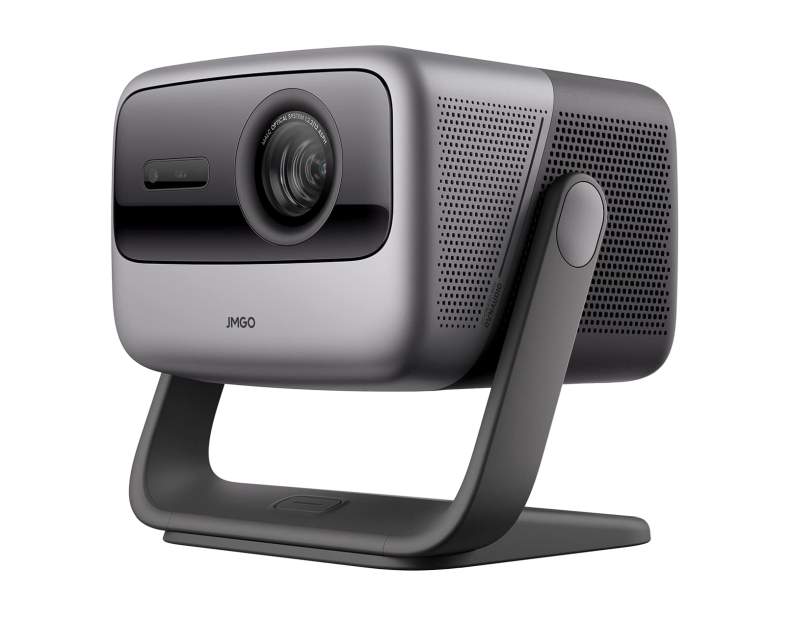
However, our second, more recent sample did measure better than the first. In Sample One's Movie picture mode, with the color temperature set to Warm, the average grayscale dE was 11.7dE, with a maximum of 17.3. The gamut/color points had an average dE of 10.2, with a maximum of 17dE, and a Color Checker that sampled more than 150 color swatches showed an average dE of 9 with a maximum of 18.3. Simply changing the Color Space to On and gamma to Dark for SDR and Middle for HDR greatly improved things, and fine-tuning a few various settings helped dial it in closer.
Sample Two, in its Standard picture mode with the color temperature set to Warm, measured an average grayscale dE of 6.8, with a maximum of 10.5. The gamut/color points had an average dE of 5.7dE, with a maximum of 9.5dE, and the Color Checker that sampled more than 150 color swatches showed an average dE of 5.4 with a maximum of 10dE. Changing the gamma to Dark for SDR and Middle for HDR helped improve the accuracy.
Post-calibration, Sample One's grayscale DeltaE averaged a much improved 1.4 with a maximum of 2.5, while the gamut showed an average dE of 1.3 and a maximum of 3.4dE due to oversaturation of 100% saturated red, a sacrifice made in order to align the lower points more closely to their intended targets. For the large-size, 150+ patch ColorChecker, the average DeltaE was 1.5, with a maximum of 3.4. With HDR content, the grayscale and color gamut averaged between 3.9 and 4.6 dE. I copied the settings from Movie into User picture mode, reran all sweeps, and confirmed that there is no difference between the picture modes if they are set up exactly the same.
Post-calibration, the second, more current sample averaged 1.1dE and max 2.3dE for grayscale. Color points and gamut measured 3.1dE average and 5.4dE max due to having no access to the Color Space setting found in Sample One, which results in oversaturation of all 100% saturated colors.
HDR between both units averaged approximately the same post calibration. HDR measurements were good, though light output is the usual deficiency that leads to errors in HDR luminance, which is common in projectors. Overall, the EOTF tracked pretty close after a slight lift in the 10% range and rolled off at around 40% stimuli.
The source I used for reviewing content post-calibration was an Apple TV 4K on Sample Two as it will ideally be the most predominant unit going forward and the one new buyers will receive today.
How do you choose the right screen for your projector?
Our Projector Screen Buyer's Guide will take you through the process of finding the correct screen for your projector and space.
Screen Buyer's Guide
4K/SDR Viewing. I began my SDR viewing with The Terminal in 4K/SDR via Apple TV 4K, which was reproduced very well. The subtle colors displayed throughout the airport, from the evening sun coming in through the windows during various scenes to the various signage lights, were captured accurately. Facial skin tones were reproduced well, with only a slight amount of missing red in the faces, such as during the scene with Amelia (Catherine Zeta-Jones) and Viktor (Tom Hanks) having dinner. Amelia's face lacked a slight flushness that I would have expected to see. However, the red of her lipstick and the backdrop of the scene, with the green plants behind her and the yellow lighted gate signs in the distance, were spot on. Overall, the image looked good, with fairly accurate color reproduction and good blacks in the dress and suit worn by Amelia and Viktor. The scene did have slightly more image noise than I'm used to seeing, and I also observed what appeared to be speckle in the yellow gate signs.
4K/HDR Viewing. For HDR evaluation, I decided to view The Rings of Power via Apple TV 4K, Season 1, Episode 6. I often use this scene to assess multiple aspects of a projector's performance simultaneously. The N1 Ultra performed fairly well. Various parts of the scene have a low average picture level (APL), and if blacks aren't handled correctly, it can either wash out the entire scene or crush a lot of detail, such as when the villagers come out of the tall grass. The N1 did a good job of preserving shadow detail without lifting the entire scene. The fires were also reproduced well, with the expected color and without clipping, which is common in projectors in this price range, resulting in whiter sections within the fire. The N1 handled this aspect well. However, during the scene when the torches were off in the distance, I did observe DLP rainbow artifacts with only very slight eye movement.
For my final HDR viewing, I watched Ready Player One via Apple TV 4K. This movie performed well overall, with correct color saturation and hues in the early race scene. Everything was accurately reproduced, from the subtle cyan color of the frame before the DeLorean fully appears, to the color of the fireworks that went off at the start of the race, to the red of Akira's bike with its green light ring around the wheels. Highlights were generally good, with just some minor clipping in the sky that didn't detract from the scene. Motion was smooth and presented well without the use of frame interpolation (MEMC). The N1 Ultra provided an overall good HDR experience.
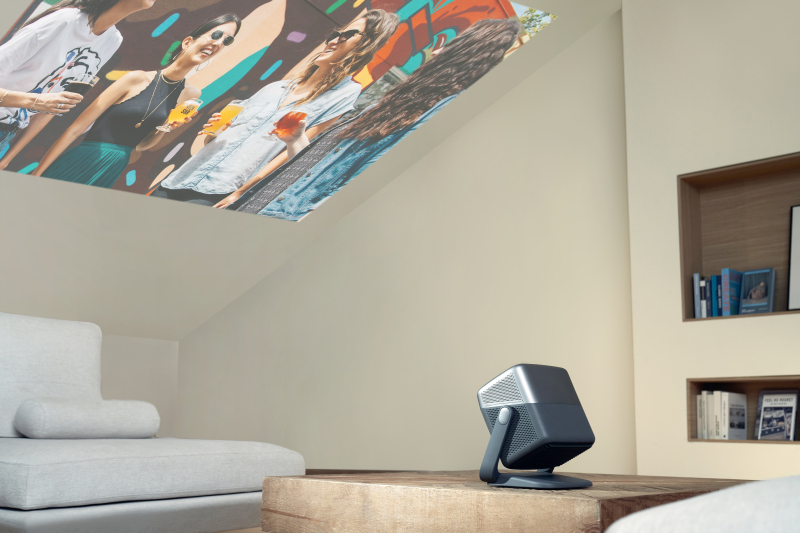
Conclusion
The JMGO N1 Ultra is an impressive unit, especially considering its price-to-performance ratio. Although it's no longer available at the bargain prices offered in its Kickstarter campaign, at $2,299 and especially with occasional promotions that see it selling for $1,999, it performs at a much higher level than expected.
The N1 Ultra is suitable for home theater applications, and many users would be pleased with its performance. It is capable of achieving high accuracy in its earlier version with the Color Space option available, and fairly high accuracy in today's current version where it is not. Its relatively high lumen output makes it suitable for moderately lit rooms, and apart from it falling short on a few of its claims the N1 Ultra meets most of its listed specs, which is rare to see in projectors in this price category. Its unique and versatile design, with its clever adjustable mount, allows it to function as a lifestyle projector for various use cases, including watching projected images on the ceiling if that is your style.
However, there are a few considerations before choosing the N1 Ultra. I would say it definitely requires calibration to get truly accurate color despite JMGO's claim to the contrary, particularly with the CMS, and it does suffer from noticeable laser speckle despite JMGO's efforts to mitigate this issue. Additionally, there are various quirks to navigate for calibration and use, such as some global settings that prevent the fine-tuning of more than one picture mode, and the inability to have separate brightness settings for SDR and HDR. If you plan to watch a lot of 3D, you'll likely find the current execution annoying over time despite a good 3D image. Some of these challenges can be easily worked around.
Overall, however, despite these deficiencies and its lack of perfection out of the box, the N1 Ultra's impressive performance in this emerging class of portable/moveable "lifestyle" projectors outweighs its drawbacks, making it a solid choice for anyone looking to delve into the world of projection.
Measurements
Brightness. The JMGO N1 Ultra is rated for 2,200 CVIA lumens, which we could not verify. However, it fell well short of its earlier published claim of 4,000 ANSI lumens. The brightest picture mode in currently shipping samples is either Vivid or Glaring depending on settings, though all picture modes can be configured the same way so any picture mode is capable of this. The Vivid/Glaring mode OOTB has a slight green bias to it though this is capable of being calibrated out with minimal adjustments. This picture mode measured 2,670 ANSI lumens.
Selecting projector Backlight value 10 accounts for full brightness of the N1 Ultra. Each decrease accounts for approximately a 10% decrease. The value of 8 results in a 21% decrease in light output, while a value of 5 results in a 48% decrease of light output, with a value of 1 resulting in an 85% decrease in light output. Strictly speaking, the N1 Ultra does not have ECO modes that reduce light output.
JMGO N1 ULTRA ANSI Lumens
| Picture Mode | 10 | 8 | 5 |
|---|---|---|---|
| Glaring | 2,670 | 2,109 | 1,388 |
| Vivid | 2,868 | 2,108 | 1,387 |
| Standard | 2,483 | 1,966 | 1,291 |
| Game | 2,670 | 2,109 | 1,388 |
| Office | 2,667 | 2,107 | 1,387 |
| User | 2,668 | 2,109 | 1,388 |
| Glaring (HDR) | 2,668 | 2,108 | 1,387 |
| Vivid (HDR) | 2,412 | 2,670 | 1,388 |
| Standard (HDR) | 2,670 | 2,109 | 1,388 |
| Game (HDR) | 2,665 | 2,105 | 1,386 |
| Office (HDR) | 2,471 | 1,952 | 1,285 |
| User (HDR) | 2,666 | 2,106 | 1,386 |
Brightness Uniformity. Our second, current sample of the JMGO N1 Ultra, projecting a 100-inch diagonal image, resulted in measured brightness uniformity of 96%. The brightest portion of the screen was the Top Middle sector, and the dimmest the Right Bottom sector. The difference in brightness on a full white or solid color screens wasn't noticeable. This was also not noticeable in actual content.
Fan Noise. JMGO rates the N1 Ultra's noise level at less than 26dB using the industry-standard averaged measurement in a soundproof booth. In my casual measurements using Room EQ Wizard software and a Umik-1 microphone, taking measurements at approximately four feet from the left, right, and rear sides of the projector, the noise level did not register when measured across all SDR and HDR picture modes. My theater room ambient noise floor measured at 33.3 dBA. This did not change while attempting to measure the N1 Ultra.
Input Lag. JMGO claims input lag of 15 milliseconds for the N1 Ultra. Our input lag measurements were done on the second, current sample in the projector's Game picture mode, with all of the automatic and manual geometry correction and auto-setup functions turned off. With these settings, a Bodnar 4K lag meter measured 35.1 milliseconds of latency with 2160p/60 signals, and 41.7 ms with 1080p/60. In Office picture mode the readings were around 58.4 ms for both signal types. All other picture modes were up around 134 ms regardless of geometry correction being deactivated.
Connections

- HDMI 2.1 (x2; HDCP 2.2; 1 with eARC, no FRL support)
- USB 2.0 Type A (power delivery)
- 3.5mm Audio Out
- Wi-Fi 6
- Bluetooth 5.0
Calibrated Settings
Calibrated image settings from any third-party do not account for the significant potential for sample-to-sample variation, nor the different screen sizes and materials, lighting, lamp usage, or other environmental factors that can affect image quality. Projectors should always be calibrated in the user's own space and tuned for the expected viewing conditions. However, the settings provided here may be a helpful starting point for some. Always record your current settings before making adjustments so you can return to them as desired. Refer to the Performance section for some context for each calibration.
Note: It is advised to not use 11-point White Balance settings for HDR. However, if used for SDR it will be required to turn it off when switching between SDR/HDR since these settings are global.
SDR settings for current units with no Color Space setting
Picture Mode: Standard
Contrast: 50
Saturation: 51
Hue: 0
Sharpness: 5
Gamma: Dark
Color Temperature: User
Red Gain: -2
Green Gain: -3
Blue Gain: -24
HDR: On
Display Mode: Automatic
Advanced Video
MPEG NR: OffAdaptive Luma Control: Low
Local Contrast Control: Off (or Low)
MEMC: Off
Color Tuner: On
| Hue | Saturation | Brightness | |
|---|---|---|---|
| Red | 54 | 40 | 80 |
| Green | 43 | 37 | 67 |
| Blue | 46 | 47 | 54 |
| Cyan | 52 | 32 | 70 |
| Magenta | 49 | 42 | 58 |
| Yellow | 54 | 41 | 52 |
| Flesh Tone | 50 | 50 | 50 |
HDR settings for current units with no Color Space setting
Picture Mode: Standard
Contrast: 50
Saturation: 54
Hue: 0
Sharpness: 3
Gamma: Middle
Color Temperature: User
Red Gain: 0
Green Gain: -1
Blue Gain: -23
HDR: On
Display Mode: Automatic
Advanced Video
MPEG NR: Off
Adaptive Luma Control: Low
Local Contrast Control: Low
MEMC: Off
Color Tuner: On
| Hue | Saturation | Brightness | |
|---|---|---|---|
| Red | 50 | 57 | 65 |
| Green | 49 | 71 | 80 |
| Blue | 54 | 66 | 54 |
| Cyan | 52 | 62 | 95 |
| Magenta | 49 | 68 | 68 |
| Yellow | 52 | 66 | 100 |
| Flesh Tone | 50 | 50 | 50 |
SDR settings for early units with Color Space menu option
Picture Mode: Movie (or User to avoid changing picture modes)
Contrast: 50
Saturation: 50
Hue: 0
Sharpness: 5
Gamma: Dark
Color Temperature: User
Red Gain: -7
Green Gain: -3
Blue Gain: -30
HDR: On
Display Mode: Automatic
Advanced Video
DNR: OffMPEG NR: Off
Adaptive Luma Control: Low
Local Contrast Control: Off (or Low)
ALLM: On
MEMC: Off
Color Space: On
Color Tuner: On
| Hue | Saturation | Brightness | |
|---|---|---|---|
| Red | 52 | 49 | 53 |
| Green | 49 | 51 | 51 |
| Blue | 53 | 47 | 52 |
| Cyan | 48 | 49 | 50 |
| Magenta | 51 | 48 | 51 |
| Yellow | 50 | 51 | 49 |
| Flesh Tone | 50 | 50 | 50 |
11 Point White Balance Correction (*NOTE* These values are global. Once entered they apply to all picture modes in SDR, HDR)
| Red | Green | Blue | |
|---|---|---|---|
| 5% | 47 | 50 | 46 |
| 10% | 50 | 50 | 49 |
| 20% | 50 | 50 | 49 |
| 30% | 49 | 49 | 49 |
| 40% | 50 | 50 | 49 |
| 50% | 50 | 50 | 49 |
| 60% | 50 | 50 | 48 |
| 70% | 50 | 50 | 50 |
| 80% | 50 | 50 | 49 |
| 90% | 49 | 50 | 47 |
| 100% | 47 | 50 | 46 |
HDR settings for early units with Color Space menu option
Picture Mode: User
Contrast: 50
Saturation: 57
Hue: 1
Sharpness: 3
Gamma: Middle
Color Temperature: User
Red Gain: -8
Green Gain: -4
Blue Gain: -31
HDR: On
Display Mode: Automatic
Advanced Video
DNR: Off
MPEG NR: Off
Adaptive Luma Control: Low
Local Contrast Control: Low
ALLM: On
MEMC: Off
Color Space: On
Color Tuner: On
| Hue | Saturation | Brightness | |
|---|---|---|---|
| Red | 50 | 54 | 63 |
| Green | 50 | 53 | 68 |
| Blue | 52 | 63 | 83 |
| Cyan | 49 | 53 | 77 |
| Magenta | 52 | 61 | 65 |
| Yellow | 51 | 54 | 79 |
| Flesh Tone | 50 | 50 | 50 |
For more detailed specifications and connections, check out our JmGO N1 Ultra projector page.
To buy this projector, use Where to Buy online, or get a price quote by email direct from Projector Central authorized dealers using our E-Z Quote tool.
Also, am I correct that the Object Avoidance system is shifting the image digitally? I imagine this causes a greater loss of pixels that your typical digital keystoning. Is this correct?
Though looking back on that statement now I would probably leave that off and just report the value at full laser.
I do see you didn't mention Contrast numbers did you by chance measure these numbers for both SDR and HDR with differences in the brightness levels slider? Thanks
"On the other hand, the N1 Ultra did meet the specified contrast ratio of 1,600:1 for FOFO measurement, achieving 1,661:1, which remained consistent across all picture modes and increased as the backlight level was lowered, ultimately reaching a maximum of 3,623:1 FOFO."







